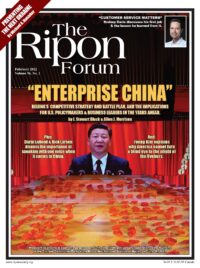
Throughout the COVID-19 pandemic, experts, politicians, commentators, and the public have criticized government agencies, oftentimes the U.S. Centers for Disease Control and Prevention (CDC), for their communications substance and style. They called out the agencies for confusing information and recommendations.
My observation is that COVID messages come from many sources, not only CDC, and even those sources providing accurate information often didn’t communicate clearly about COVID risks. From the beginning, scientists labeled the virus a “novel” threat with many unknowns for human health. This means we all began with little knowledge and understanding about what was to come. Practical plain language explanations of risks along the way could have better prepared the public for the long haul.
Practical plain language explanations of risks along the way could have better prepared the public for the long haul.
Plain language puts audiences’ information needs at the center of the process, and COVID communications have prioritized some audiences over others. Epidemiological data have driven COVID messaging rather than the public’s need to understand and respond to the virus’ threat. From the beginning, the numbers of cases, hospitalizations, and deaths have been the lead, not just from CDC but in many media reports, commentary, and policymakers’ statements.
If I’m a policymaker, hospital administrator, or even frontline clinician, then illness, hospitalization, and death data are relevant for planning, resource allocation, and service delivery. Members of the public trying to gauge their personal risk, however, need simple, actionable information that aligns with how they live their lives. For example, the UMD Horowitz Center for Health Literacy made an animated video for college students to show them more and less risky realistic situations.
Research shows people don’t trust what they don’t understand, and a lot about COVID has been hard to understand.
Research shows people don’t trust what they don’t understand, and a lot about COVID has been hard to understand. The specialized language or jargon has been overwhelming: airborne versus droplets, herd immunity, underlying health conditions, flatten the curve, mRNA technology, to name a few.
For example, plain language explanations weren’t easy to find about what clinical trials are and why they are the best way to know the vaccines worked as intended and are safe enough for millions of people. Instead, the official messages were “Vaccines are safe. We know because we tested them in clinical trials.” As many have noted, people excluded or abused by prior medical research especially needed plain language information about the science behind the vaccines and why they could trust both the scientists and the science.
Technically, “risk” is a numerical probability, but practically, risk is our personal, shifting sense of how dangerous something is. Explaining risks in plain language builds people’s understanding and confidence. For example, recent testing messages show the confusion that happens when people can’t figure out what’s risky or not. Testing demand confirms many people want to do the right thing and know if they’re infected, but they couldn’t make sense of being told to test before seeing friends and family during the holidays but that testing wasn’t necessary to leave isolation. If the risks were different in these situations, then the public needed a clear statement about why.
As we reflect on this pandemic and anticipate the next, we must consider if we want to replicate COVID communication missteps for future outbreaks. Despite misinformation, we know enough about clear communication to do better. The question is, how much effort are we willing to spend to have a public with an accurate understanding of the health risks they may face?
Cynthia Baur, PhD, is the Director of the Horowitz Center for Health Literacy, University of Maryland School of Public Health. Prior to joining the Center in 2017, Dr. Baur spent ten years working in CDC health communication roles, participating in pandemic influenza communication planning, and leading the agency’s health literacy and plain language work, and before CDC, almost eight years in the Office Disease Prevention and Health Promotion, Office of the Assistant Secretary for Health, U.S. Department of Health and Human Services.




